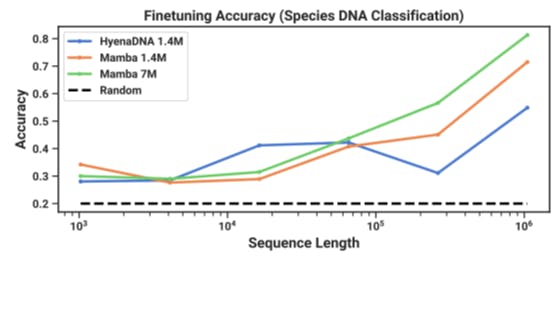Authors:
(1) Albert Gu, Machine Learning Department, Carnegie Mellon University and with equal contribution;
(2) Tri Dao, Department of Computer Science, Princeton University and with equal contribution.
Table of Links
3 Selective State Space Models and 3.1 Motivation: Selection as a Means of Compression
3.2 Improving SSMs with Selection
3.3 Efficient Implementation of Selective SSMs
3.4 A Simplified SSM Architecture
3.5 Properties of Selection Mechanisms
4 Empirical Evaluation and 4.1 Synthetic Tasks
4.4 Audio Modeling and Generation
4.5 Speed and Memory Benchmarks
A Discussion: Selection Mechanism
D Hardware-aware Algorithm For Selective SSMs
E Experimental Details and Additional Results
4.4 Audio Modeling and Generation
For the audio waveform modality, we compare primarily to the SaShiMi architecture and training protocols (Goel et al. 2022). This model comprises
-
a U-Net backbone with two stages of pooling by a factor p that doubles the model dimension D per stage,
-
alternating S4 and MLP blocks in each stage.
We consider replacing the S4+MLP blocks with Mamba blocks. Experiment details are in Appendix E.4.
4.4.1 Long-Context Autoregressive Pretraining

Both Mamba and the SaShiMi (S4+MLP) baseline improve consistently with longer context lengths; Mamba is better throughout, and the gap widens at longer lengths. The main metric is bits per byte (BPB), which is a constant factor log(2) of the standard negative log-likelihood (NLL) loss for pretraining other modalities.
We note one important detail: this is the only experiment in this paper in which we switched from the real parameterization to complex (Section 3.6). We show additional ablations in Appendix E.4.
4.4.2 Autoregressive Speech Generation
SC09 is a benchmark speech generation dataset (Donahue, McAuley, and Puckette 2019; Warden 2018), consisting of 1-second clips sampled at 16000 Hz of the digits “zero” through “nine” with highly variable characteristics. We largely follow the autoregressive training setup and generation protocol of Goel et al. (2022).
Table 4 shows automated metrics of the Mamba-UNet model compared to a variety of baselines from Goel et al. (2022): WaveNet (Oord et al. 2016), SampleRNN (Mehri et al. 2017), WaveGAN (Donahue, McAuley, and Puckette 2019), DiffWave (Z. Kong et al. 2021), and SaShiMi. A small Mamba model outperforms the state-of-the-art (and much larger) GAN- and diffusion- based models. A larger model parameter-matched to the baselines further improves on fidelity metrics dramatically.
Table 5 takes the small Mamba model and investigates combinations of different architectures for the outer stages and center stage. It shows that Mamba is consistently better than S4+MLP in the outer blocks, and Mamba > S4+MLP > MHA+MLP in the center blocks.


This paper is available on arxiv under CC BY 4.0 DEED license.

